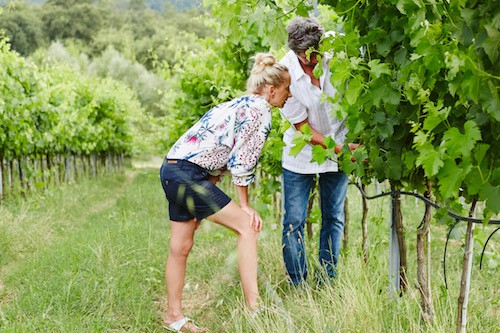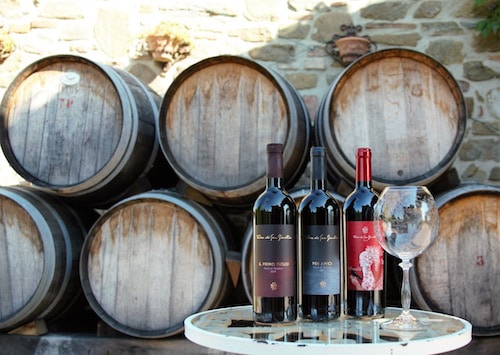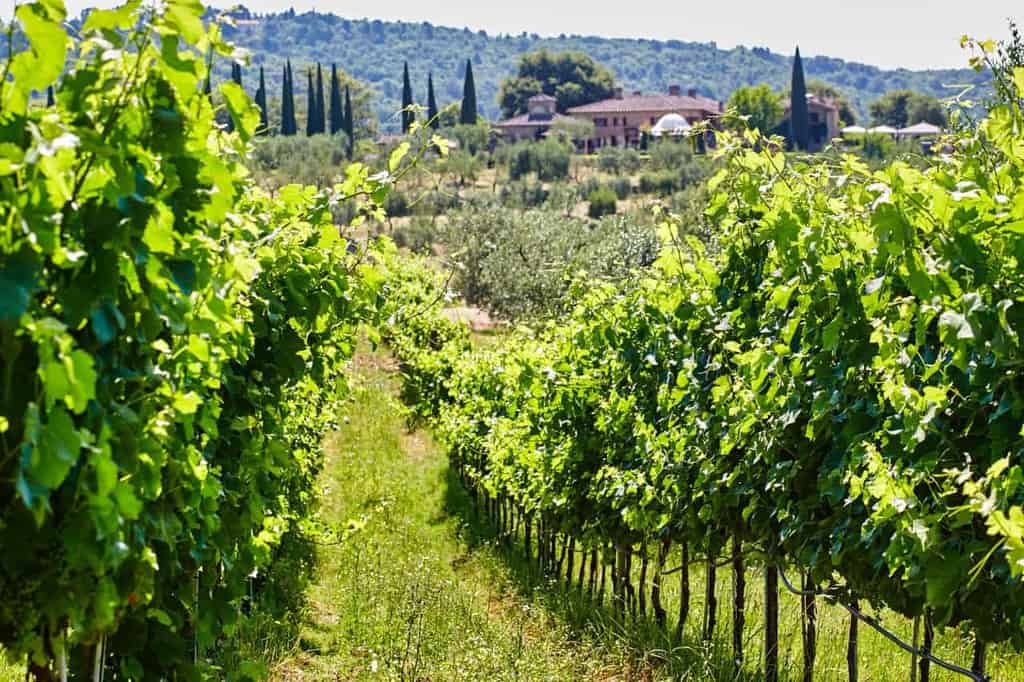Agnieszska Tynkiewicz-Gile, Estate Owner and Director of Terre di San Giustino Vineyard, spoke with Winetraveler at length regarding the process and passion required to becoming a winemaker and starting a winery in Italy.

As a successful interior designer in London with humble roots in Communist Poland, becoming a winemaker was never on my radar. In 2006, my husband and I decided to move to Italy. We were looking for somewhere remote and away from civilization where we could both enjoy our time together as a family and host friends and family from around the world in a beautiful location.
After 18 months of searching and viewing over 100 properties, we found our home in San Giustino. The property was formally a vacation spot for a Roman family with an existing small vineyard which had been neglected for decades. Our immediate focus was on restoring historical buildings for our family and visitors. However, as more and more friends came to visit, we thought – why buy someone else’s wine when we have the ability to make our own? In 2008, we planted our first grapes and the Terre di San Giustino vineyard was born.

As a vineyard located in Italy that is focused on quality not quantity and committed to producing organic wine, the details of my experiences and advice to aspiring vintners may be a little different from the norm. However, as an entrepreneur, I believe my four recommendations can apply to anyone out there in any industry.
BE PATIENT.
If you are looking for fast results and rapid profit, winemaking is not the industry for you. For us, it was a long and slow learning process – and we’re still learning a decade later. In Italy, just because you have the land for a vineyard, it does not mean you can plant grapes. Italy maintains a quota on the amount of each type of grape that can be planted. To even get approval to plant the Merlot and Sangiovese grapes that we wanted was a long, arduous process.
Once the grapes are planted, it is another three or four years until your first harvest and your first full harvest isn’t often until your seventh year. As your wine ages in steel for up to 18 months, you are constantly trying it and deciding whether to keep it pure, blend it with another grape or move to oak. The process is slow and requires patience, but when you drink your first bottle, it is completely worth the time, effort, and seven year wait.

FIND THE RIGHT PEOPLE.
Decide how involved you want to be in the process and find an agronomist and an enologist who fit into your vision. I always wanted to be very involved in the process, but because winemaking was a new venture for me, my learning curve was quite steep. Our original agronomist was an accomplished professional but wasn’t willing to walk me through the process. It was a tough call, but we ultimately changed in 2012 to our current agronomist Benedetto D`Anna who has been instrumental in my education as a winemaker. He understood our desire to expand the vineyard but still maintain its boutique quality and cultivate grapes according to traditional Tuscan methods. He educated us on organic production and as a result we will be fully organic certified in two years.

GROW SLOWLY.
With a seven year wait for your first bottle, it’s tempting to want to do it all at once. However, I firmly believe in starting small, mastering each blend, and then slowly progressing to the next. Don’t try to do too much at once. Start with a blend that is basic in your region and learn through that – especially if you are new to winemaking. You need that learning curve. We began with just two reds in 2013 – Sangiovese and Merlot. In 2016, we added a prosecco. We expect a third, more complex red to be available in 2019 and forth – pure Chianti – in 2021. Finally, we plan to release our two white wines in 2020.
FIND A BALANCE.
Find something you are passionate about outside of winemaking. It is so easy to get caught up in the details of the vineyard and having an outlet makes you appreciate and enjoy the process so much more. For me, it’s a school my husband and I started in Cambodia called Liger Leadership Academy (www.ligeracademy.org). This innovative school is working to create the future leaders and change makers of Cambodia – a country that we fell in love with years ago and where we eventually adopted our son from. Whenever I`m free of vineyard responsibilities, I am thankful to be able to dedicate my time to a group of disadvantaged students who are doing their best to make their country better. It keeps things in perspective and feels good to help empower young talented individuals.


So many people dream of owning a vineyard. It’s the bucolic life, farming and slowly waiting for the final product. Seven years is the reality check. Passion and Patience are the guide. And probably a little disposable income to keep you afloat in the process!
I used to think I might like to own a winery. That is until I moved to Bordeaux and have close friends that own châteaux. Not only is it an incredible amount of work that never stops, there is so much risk even after you’ve established your winery. You’re at the mercy of the weather and so many other things that you just have no control over. One epic storm can devastate your entire vineyard. I have a much deeper respect for those that produce wine because it takes a lot of passion to endure it all.
Some great tips…now even more inspired to start a winery some day although we know how much work goes into it!
I’ve been thinking a lot about new projects and collaboration — this advice seems to work in so many ways, for so many things! Great idea for an article — thanks for sharing.
This is one of my favorite wine articles I’ve read in some time. It fits my love of connecting wine to life and the broader world, something I love to do because I think wine tells us to move with purpose and appreciation for the world around us. Thank you!